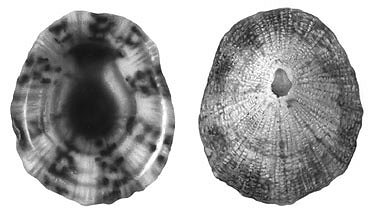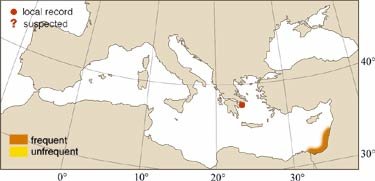
|
Relevant Synonyms
Misidentification
|
|
| drawing: Tuvia Kurz |
|
SHORT
DESCRIPTION
color :
externally pale brown or yellowish with 8-10 sectors of dark brown mixed with blotches of the background color; inside translucent with external color showing through, except on the callus which is variously tinged with white and brown or pale orange.
common size :
25-35 mm long; up to 37 mm in the Indo-Pacific. |
DISTINGUISHING CHARACTERISTICS
BIOLOGY / ECOLOGY
habitat :
on rocks near sea level. |
|
1st
Mediterranean record
|

|
|
DISTRIBUTION
|
ESTABLISHMENT SUCCESS
speculated reasons for success :
|
|
|
MODE OF
INTRODUCTION |
IMPORTANCE TO
HUMANS |
|
KEY
REFERENCES
|
|
|
 Patella rota Gmelin, 1791
Patella rota Gmelin, 1791